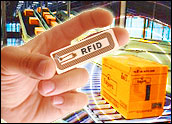
Inventory has different values depending on time. The goal of a supply chain is to deliver the right product at the right place at the right time and the right cost. Miss any of those elements and the value of the inventory can be severely damaged.
Let me demonstrate with a real example. My family made two purchases on Christmas Eve this year. One of the items was marked down by half and the other was a tenth of the original price.
How did last minute shoppers come across such great bargains? What were the products? Was it the latest virtual gaming console? Or was one of the items a doll accessory for our daughter?
The Products
The item we purchased that had been marked down by half was a packet of Christmas cards. My wife had decided to take a quick peek into our favorite card shop at the mall to see if the selection of remaining Christmas cards warranted braving the after-Christmas sale rush.
The store had already begun marking down items for the after-Christmas sale, explaining that they weren’t going to have time to get everything ready for the day after Christmas and had to start early.
The purchase we made for a tenth of the original price was a Christmas tree. A local horse stable and riding school bought a truckload of Christmas trees and was selling them from an empty corral near the road.
There were five trees left, a couple damaged from the blizzard, and late afternoon on Christmas Eve the owner was very happy to get any amount of money and have someone take one away. After Christmas, the trees would be worthless and she’d have to pay someone to haul them away to the local recycling collection spot.
The Changing Value
Do you see how inventory has different values at different times? In the case of the Christmas cards and the Christmas tree, the physical logistics weren’t the issue. The product was there on time, and available, and was the right product in terms of what we were wishing to buy.
One might argue that the ordering system could be improved because there was excess inventory, but there were only two remaining boxes of the style of card we wanted and only five trees left on the lot.
Understanding the changing value of inventory is important when making sourcing decisions in the supply chain. The price is determined by how much the customer is willing to pay at a given point in time. Understanding the true cost of the inventory can be more difficult.
It’s Not Getting Easier
As global sourcing initiatives continue to expand, supply chains are becoming more complex. Longer lead times, longer transit times and more entities involved in the supply chain can create a perfect storm for increased inventory and working capital requirements.
In evaluating the trade-offs between sourcing domestically versus globally, many companies are using some level of landed cost analysis that compares freight, duty, brokerage and customs fees. However, little attention is made to the comparison on inventory levels.
Two main structural forces drive this behavior:
- Personnel responsible for the sourcing decision typically are not responsible for inventory.
- The “inventory carrying cost” concept is often misunderstood. Inventory carrying cost is the opportunity cost for the inventory. Many companies apply just the weighted average cost of capital as their inventory carrying cost rate.
On average, this can be 10 to 12 percent, depending on cost of debt (interest rates) and cost of equity. Firms also need to consider the cost of obsolescence, scrap, shrinkage storage, taxes and utilities.
In the case of the Christmas cards and Christmas trees, this means understanding how many items will be marked down, damaged and ultimately scrapped.
Here’s an illustrative cost build up from a company that I worked with that historically had high levels of obsolescence and inventory write offs in an industry with short product cycles:
- Weighted average cost of capital: 11.25 percent
- Storage: 3.25 percent
- Insurance and taxes: 1 percent
- Obsolescence, scrap, shrink: 20 percent
Total: 35.5 percent
The difference in using 11.25 percent versus 35.5 percent in evaluating supply chain trade-offs means increased focus on eliminating nodes in the network, increased visibility of product in the pipeline, more just in time deliveries and a lean manufacturing approach.
Air Freight Service Levels
Below, a graph depicts the use of inventory carrying cost in determining the mode of transportation in a parts replenishment study. The part in question is to be supplied from a foreign source into a high-tech assembly process on a regular interval over a time period of one year.
The different service levels of air freight (Air SL1, Air SL2 and Air SL3) are two days, three days and five days, respectively, and the Ocean service level is 22 days. The calculated inventory carrying cost is 25 percent.
In this example, the overall costs when considering inventory is to fly the goods in using a five-day service level since it is the most cost effective (red circle).
Without considering inventory carrying, costs ocean freight would’ve been chosen as the least cost alternative (light blue circle).
If the inventory carrying cost used had been 10 percent versus 25 percent, the ocean freight would have been the overall least total cost (the green “inventory carrying cost” bar would be substantially smaller thereby signaling the ocean freight option).
Considering inventory carrying costs in sourcing and supply chain trade-offs can yield important insights to the decision-maker.
The following are three key tips for making good decisions:
- Understand the cost build up of the inventory carrying cost rate. Are obsolescence, damage, shrinkage, and mark downs an important fact of life in your business? Are you using the true weighted average cost of capital for your business right now or some old “rule of thumb”? Do you have product family data to draw from to develop a specific product inventory carrying cost rate or are you using a company-wide average?
- Evaluate the real differences in the global source versus the domestic source in terms of order lead times, manufacturing time, transit time, wait times in the physical network, lot sizes, etc. The differences can be dramatic. The constant search for lower unit price can lead to increased levels of inventory and higher working capital requirements.
- Create a mind-set that inventory is an investment and should be evaluated alongside other investment opportunities for your business. If the stable owner had been left with more trees on Christmas Eve, she may have been better off by paying down debt, investing in improvements in the stable or launching a new marketing campaign for her riding school.
John Brockwell is vice president of global supply chain management for JPMorgan Chase Vastera. He has an extensive background in global trade business and process evaluation, logistics planning and decision support systems.














































